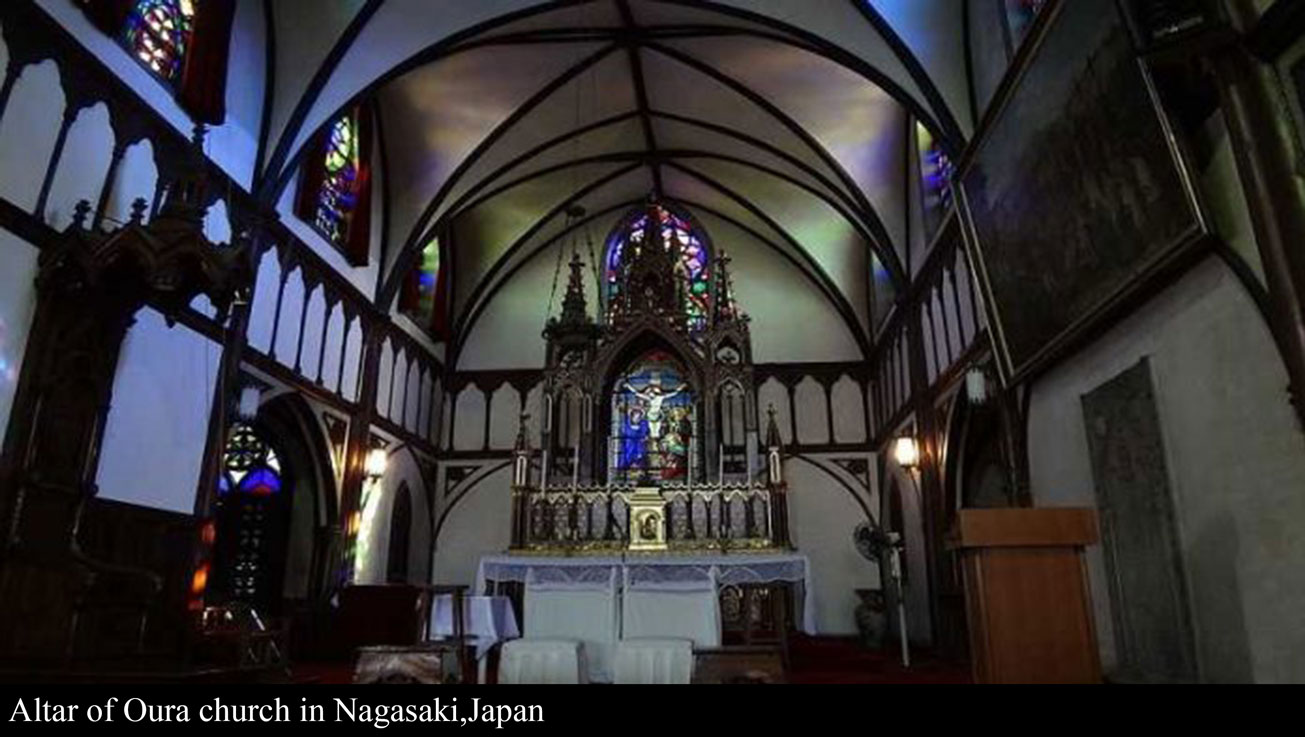JAPAN
UNESCO recognizes the heritage of ‘Hidden Christians’ in World Heritage List
The hidden Christians of Japan were first brought to the world’s attention when Pope Francis, the first Jesuit pontiff, mentioned them in his address to the bishops of the episcopal conference of Japan in 2015. “Even when all lay missionaries and priests had been expelled from the country, the faith of the Christian community did not grow cold,” Pope Francis said. adding “These two pillars of Catholic history in Japan, missionary activity and the ‘Hidden Christians,’ continue to support the life of the Church today.”
As Japan began to rediscover and celebrate the history of its “Hidden Christians”, a panel of ministries and agencies was instructed to compile a list of. places linked to the history of Japan’s persecuted Christians. Following on-site inspections, the panel. submitted a proposal to UNESCO’s last February to add them to the list of natural and cultural World Heritage sites. Japan had initially nominated 14 “Churches and Christian Sites in Nagasaki” in 2015 but withdrew the nomination as the International Council on Monuments and Sites suggested that more emphasis should be given to the persecution of Christianity, enforced by the Tokugawa shogunate from the 17th century. Japan dropped two sites which were considered not strongly connected with the period when Christianity was prohibited and resubmitted it in 2017.
A UNESCO advisory board offered suggestions to the Japanese government that led to the awarding of World Heritage status on 30 June to12 historic sites in southwestern Japan which show how Japanese Christians protected their faith at all costs. The newly-listed places in Nagasaki and Kumamoto prefectures “bear a unique testimony to a distinctive religious tradition.
The newly-listed sites include small villages such as Sakitsu and villages on Kashiragashima Island, which was used to quarantine smallpox patients and hence avoided by most people. Christians fled there and hid their faith by outwardly behaving as Buddhists and Shinto followers under the guidance of a Buddhist man. Another important site is Oura Cathedral in Nagasaki built in 1864 to honour 26 Christian martyrs. It is Japan’s oldest surviving church and is already considered a national treasure. Also listed are the remains of Hara Castle, the most important site of the Shimabara-Amakusa rebellion in 1637 involving peasants, mostly Christians, that led to the country’s ban on Christianity and forced many Japanese Christians to practice their faith in secret for fear of increased persecution.
Compared with other World Heritage places directly associated with religious persecution such as Turkey’s Goreme National Park and the Rock Sites of Cappadocia,, the sites in the Nagasaki region are unique because the communities involved continued to transmit their religion on their own, in secret and under difficult conditions for an extended period that lasted more than 200 years. Japanese laypeople passed on the Christian faith by themselves without any guidance from priests, while it is thought some clergy remained in the communities in Cappadocia and that contact was maintained with Constantinople and other centres of Christianity. In addition, Christians in Cappadocia hid in caves to take refuge from attacks, whereas the hidden Christian communities in the Nagasaki region coexisted with local people of other faiths, despite the threat of persecution by authorities.
Saint Francis Xavier, a Jesuit from the Basque area of northern Spain, and his companions introduced Christianity to Japan in 1549. After all Catholic Church leaders had been banished from Japan, hidden Christians were led by community leaders called “Kolkata,” who administered the observance of the liturgical calendar, and “mizukata,” who performed baptisms. After the ban on Christianity was lifted in 1873, many hidden Christian communities rejoined the Catholic Church under the guidance of missionaries who were sent by the Vatican, though some continued their distinctive beliefs and practices. Those who were not reintegrated into the Catholic Church were called “kakure kirishitan,” and a small number of them still exist today in the region. On rejoining the Catholic Church, in some villages people constructed churches in places dating back to the period of the ban, such as the houses of former hidden Christian leaders, some of which are included among the World Heritage sites.
It is relatively easy to recognize the churches in cultural heritage terms but local residents were wondering why their farmlands and forests were given the same status. They needed to be shown the reasoning behind this and the significance in relation to the history and tradition of hidden Christians. Since some sites were awarded World Heritage status as villages, they have to be preserved as villages to maintain their value. However, maintaining heritage sites in the Nagasaki region, especially those on remote islands, will not be easy. Just like other heritage sites in the country ageing and depopulation make it hard to secure a sufficient number of people to preserve the sites. Sustainable tourism may be the answer, enabling a sufficient number of people to visit the area without damaging the structures and causing harm to the daily lives of villagers.
ACN Malta





